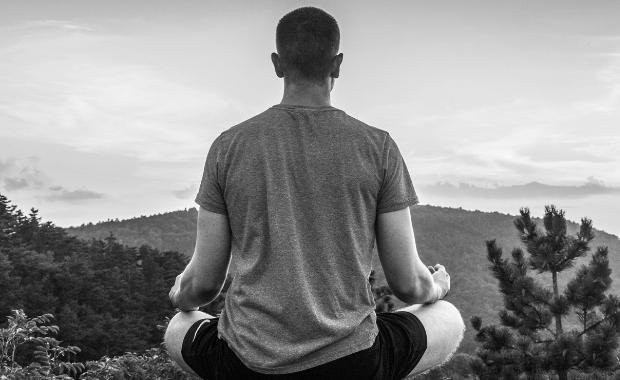Life
How Mindfulness Helped Me Drop Bad Habits

Almost everyone will admit they have areas or habits in their lives they feel can be better than they are at the moment. Some people may feel they can be more kind and compassionate, others feel they can be more assertive, and others feel they can be more peaceful and happy.
For me, a few years ago, I felt I could be less angry and explosive. I was short-tempered and would often result in very cruel words which I didn’t think through well or just simply be violent. And this was not something I enjoyed at all.
I tried a couple of anger management techniques to see if they could help but they were barely helpful. When I almost gave up on this character improvement project, it’s when I discovered mindfulness and went on to work with it to overcome this problem.
A Clear Breakdown of How I Used Mindfulness to Conquer Anger
Step 1. Research about mindfulness and get to know it
Although I had a rough idea of awareness, I decided to do deep research on it so that I would have concrete detailed information on the practice. I used reliable sources of information online for learning about mindfulness which are credible and authoritative in the self-improvement industry.
I also read books, visited self-help websites, watched videos, and listened to podcasts on mindfulness.
Step 2. Figure out an approach plan and where to start
After my research, I tried to figure out how I could apply it practically in my life. I had learned that mindfulness meditation was a form of training in mindfulness so I only found it natural to begin mindfulness by training myself through meditation.
My approach plan was to start with the meditation practice and later on try out other mindfulness techniques to increase my moments of mindfulness and increase its effects in my life.
Step 3. Get started with mindfulness meditation immediately
After having a vision and a plan of how to approach things, I made the effort of beginning the meditation practice right away. I used guided meditation resources for mindfulness meditation to help me learn how to do the meditation practice and also have a feel of what mindfulness is like. I began meditating for 5 minutes and slowly increased the duration as I got comfortable. This is an important step because most people don’t take it. They never get started at all.
Step 4. Aim to get better with every meditation session
After a couple of meditation sessions, I noticed that, since I was still a beginner, I was making a lot of mistakes which included feeling weighed down by the practice and feeling like it was too much work to do, just to name a few. So I researched more about the problems from people who have experienced the same in the past, found effective solutions for them, and began applying them as I aimed to make some improvements in every session. Online meditation communities and forums helped me find the solutions to my meditation problems.
Step 5. Reflect and visualize about solving the problem you have
My goal was to control my anger to the point where it couldn’t affect me even when I was told anything that might trigger negative reactions. I desired to be told something that felt insulting and not even flinch. So I would reflect every so often on how I wanted my life to be. I would think about the specific problems that are brought by the anger and I would try to look for solutions. And then I would visualize myself applying those solutions in the needed areas. I would consciously tell my mind that the visualized solution is exactly how I’m going to be doing things in my life going forward. Doing that helped me remember to be aware of myself when such times came and made applying the solutions much easier since I had already established in my mind, through visualization, exactly how I wanted things to be.
Step 6. Put in personal effort consistently to apply the solution
Now applying the solution every time isn’t easy. The first few times might be a bit easy but making them stick and become your second nature is quite hard. What I found to help with the issue of consistency and habit creation is that you have to view the solution like a new habit you’re going to form that’s going to stick with you forever.
So when you apply it the first few times successfully, you should still remind yourself that it’s what you’re going to do again when you’re in the same situation in the near future. I reminded myself and followed it up with physical effort. If I came across anything I knew might make me angry, I would try to be aware of myself and my emotions and then remind myself what I decided to be doing, and then I would act upon it immediately. Sometimes, I would choose to walk away, and other times I would keep quiet and discipline myself to not speak at all.
Step 7. Aim to be aware of yourself
Based on my personal experiences, I have learned that being always aware of yourself, not just when you want to solve a problem in your life, but every other moment really helps. Awareness helps you not get into that problem in the first place so that you avoid having to solve it after it has already affected your life.
However, being always aware is pretty hard and needs a lot of work. I achieved it by doing mindfulness meditation daily for 10 to 20 minutes to start with.
I also worked with mindful listening and speaking when I was having conversations with other people, mindful working when working, mindful walking when commuting to work or generally any time I was walking, mindful eating during my meal times, and mindful showering when taking a bath. Ideally, taking any chance you get to be aware and fully maximize it.
However, before I got to use these other mindfulness techniques, I only worked with mindfulness meditation and visualization to be aware of myself when trouble came and then used the other mindfulness techniques to be always aware of myself.
Moreover, I’d take my time in the evenings to review how my day was and how I did with regard to calming down my anger. And I’d visualize how I would approach the next day when I had the same anger problems. I’d take different versions of scenarios that would get me angry and see myself handling them much better without being lost in emotions. Doing this helped me remember automatically how to behave when I got into such situations.
To achieve all that I was dedicated, committed, disciplined, and focused on making a permanent change. Eventually, it worked!
Did You Know
How Skilled Migrants Are Building Successful Careers After Moving Countries
Behind every successful skilled migrant career is a mix of resilience, strategy, and navigating systems built for locals.

Moving to a new country for work is exciting, but it can also be unnerving. Skilled migrants leave behind familiar systems, networks, and support to pursue better job opportunities and a better future for their families. (more…)
Life
10 Research-Backed Steps to Create Real Change This New Year
This New Year could finally be the one where you break old patterns and create real, lasting change.

Every New Year, we make plans and set goals, but often repeat old patterns. (more…)
Life
9 Harsh Truths Every Young Man Must Face to Succeed in the Modern World
Before chasing success, every young man needs to face these 9 brutal realities shaping masculinity in the modern world.

Many young men today quietly battle depression, loneliness, and a sense of confusion about who they’re meant to be.
Some blame the lack of deep friendships or romantic relationships. Others feel lost in a digital world that often labels traditional masculinity as “toxic.”
But the truth is this: becoming a man in the modern age takes more than just surviving. It takes resilience, direction, and a willingness to grow even when no one’s watching.
Success doesn’t arrive by accident or luck. It’s built on discipline, sacrifice, and consistency.
Here are 9 harsh truths every young man should know if he wants to thrive, not just survive, in the digital age.
1. Never Use Your Illness as an Excuse
As Dr. Jordan B. Peterson often says, successful people don’t complain; they act.
Your illness, hardship, or struggle shouldn’t define your limits; it should define your motivation. Rest when you must, but always get back up and keep building your dreams. Motivation doesn’t appear magically. It comes after you take action.
Here are five key lessons I’ve learned from Dr. Peterson:
-
Learn to write clearly; clarity of thought makes you dangerous.
-
Read quality literature in your free time.
-
Nurture a strong relationship with your family.
-
Share your ideas publicly; your voice matters.
-
Become a “monster”, powerful, but disciplined enough to control it.
The best leaders and thinkers are grounded. They welcome criticism, adapt quickly, and keep moving forward no matter what.
2. You Can’t Please Everyone And That’s Okay
You don’t need a crowd of people to feel fulfilled. You need a few friends who genuinely accept you for who you are.
If your circle doesn’t bring out your best, it’s okay to walk away. Solitude can be a powerful teacher. It gives you space to understand what you truly want from life. Remember, successful men aren’t people-pleasers; they’re purpose-driven.
3. You Can Control the Process, Not the Outcome
Especially in creative work, writing, business, or content creation, you control effort, not results.
You might publish two articles a day, but you can’t dictate which one will go viral. Focus on mastery, not metrics. Many great writers toiled for years in obscurity before anyone noticed them. Rejection, criticism, and indifference are all part of the path.
The best creators focus on storytelling, not applause.
4. Rejection Is Never Personal
Rejection doesn’t mean you’re unworthy. It simply means your offer, idea, or timing didn’t align.
Every successful person has faced rejection repeatedly. What separates them is persistence and perspective. They see rejection as feedback, not failure. The faster you learn that truth, the faster you’ll grow.
5. Women Value Comfort and Security
Understanding women requires maturity and empathy.
Through books, lectures, and personal growth, I’ve learned that most women desire a man who is grounded, intelligent, confident, emotionally stable, and consistent. Some want humor, others intellect, but nearly all want to feel safe and supported.
Instead of chasing attention, work on self-improvement. Build competence and confidence, and the rest will follow naturally.
6. There’s No Such Thing as Failure, Only Lessons
A powerful lesson from Neuro-Linguistic Programming: failure only exists when you stop trying.
Every mistake brings data. Every setback builds wisdom. The most successful men aren’t fearless. They’ve simply learned to act despite fear.
Be proud of your scars. They’re proof you were brave enough to try.
7. Public Speaking Is an Art Form
Public speaking is one of the most valuable and underrated skills a man can master.
It’s not about perfection; it’s about connection. The best speakers tell stories, inspire confidence, and make people feel seen. They research deeply, speak honestly, and practice relentlessly.
If you can speak well, you can lead, sell, teach, and inspire. Start small, practice at work, in class, or even in front of a mirror, and watch your confidence skyrocket.
8. Teaching Is Leadership in Disguise
Great teachers are not just knowledgeable. They’re brave, compassionate, and disciplined.
Teaching forces you to articulate what you know, and in doing so, you master it at a deeper level. Whether you’re mentoring a peer, leading a team, or sharing insights online, teaching refines your purpose.
Lifelong learners become lifelong leaders.
9. Study Human Nature to Achieve Your Dreams
One of the toughest lessons to accept: most people are self-interested.
That’s not cynicism, it’s human nature. Understanding this helps you navigate relationships, business, and communication more effectively.
Everyone has a darker side, but successful people learn to channel theirs productively into discipline, creativity, and drive.
Psychology isn’t just theory; it’s a toolkit. Learn how people think, act, and decide, and you’ll know how to lead them, influence them, and even understand yourself better.
Final Thoughts
The digital age offers endless opportunities, but only to those who are willing to take responsibility, confront discomfort, and keep improving.
Becoming a man today means embracing the hard truths most avoid.
Because at the end of the day, success isn’t about luck. It’s about who you become when life tests you the most.
Change Your Mindset
The Four Types of Happiness: Which One Are You Living In?
Most people chase success only to find emptiness, this model reveals why true happiness lies somewhere else.

In a world driven by rapid technological growth and constant competition, many people unknowingly trade joy for achievement. (more…)
-

 Did You Know4 weeks ago
Did You Know4 weeks agoThe Success Patterns You Inherited (And Didn’t Notice)
-

 Entrepreneurs3 weeks ago
Entrepreneurs3 weeks agoThe Essential Skills Every Entrepreneur Needs In 2026
-

 Change Your Mindset3 weeks ago
Change Your Mindset3 weeks agoHow to Turn Your Mind Into Your Greatest Asset (Instead of Your Enemy)
-

 Change Your Mindset3 weeks ago
Change Your Mindset3 weeks agoThe Silent Skill That Makes People Respect You Instantly
-

 Life2 weeks ago
Life2 weeks ago10 Research-Backed Steps to Create Real Change This New Year
-

 Tech2 weeks ago
Tech2 weeks agoWhat’s in a Name? How to Get Your Domain Right
-

 Did You Know1 week ago
Did You Know1 week agoHow Skilled Migrants Are Building Successful Careers After Moving Countries
























